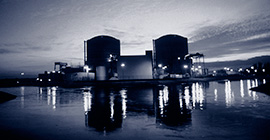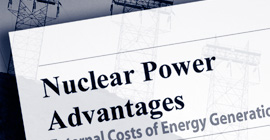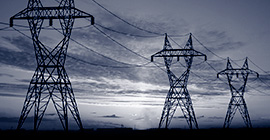Commercial electrical generation plants work on the same principle. They begin with some kind of energy source – water, fossil fuels or nuclear, and even some forms of solar and wind – that is engineered to drive turbines which generate electricity. Each type of generator has its own unique benefits, drawbacks and place in the world’s energy mix.
Today’s nuclear power plants generate roughly 13% of the world’s electricity. Nuclear reactors do not emit any significant greenhouse gases, they maintain relatively small physical footprints and consistently provide low-cost, reliable, 24/7 baseload electricity to the world.











